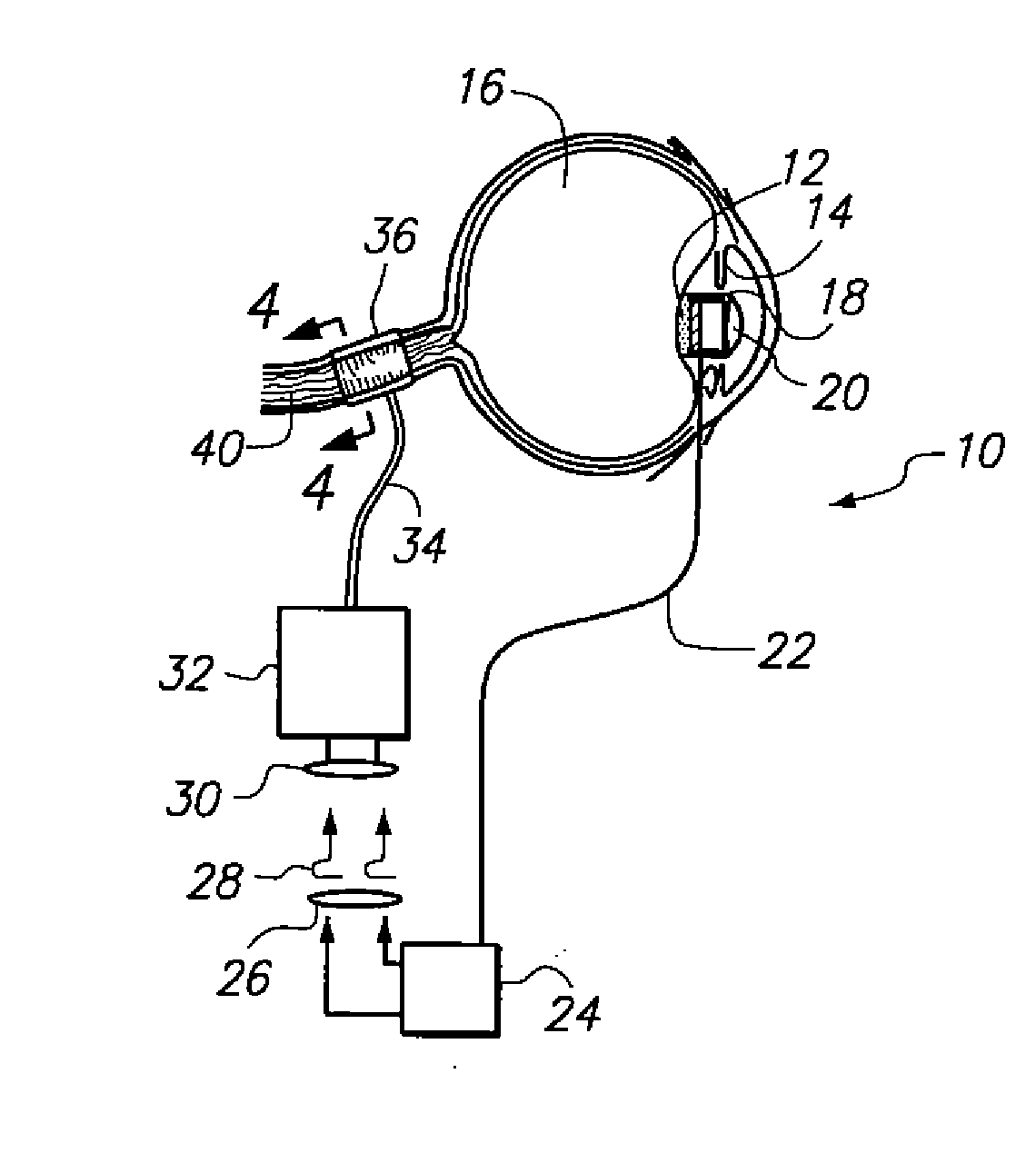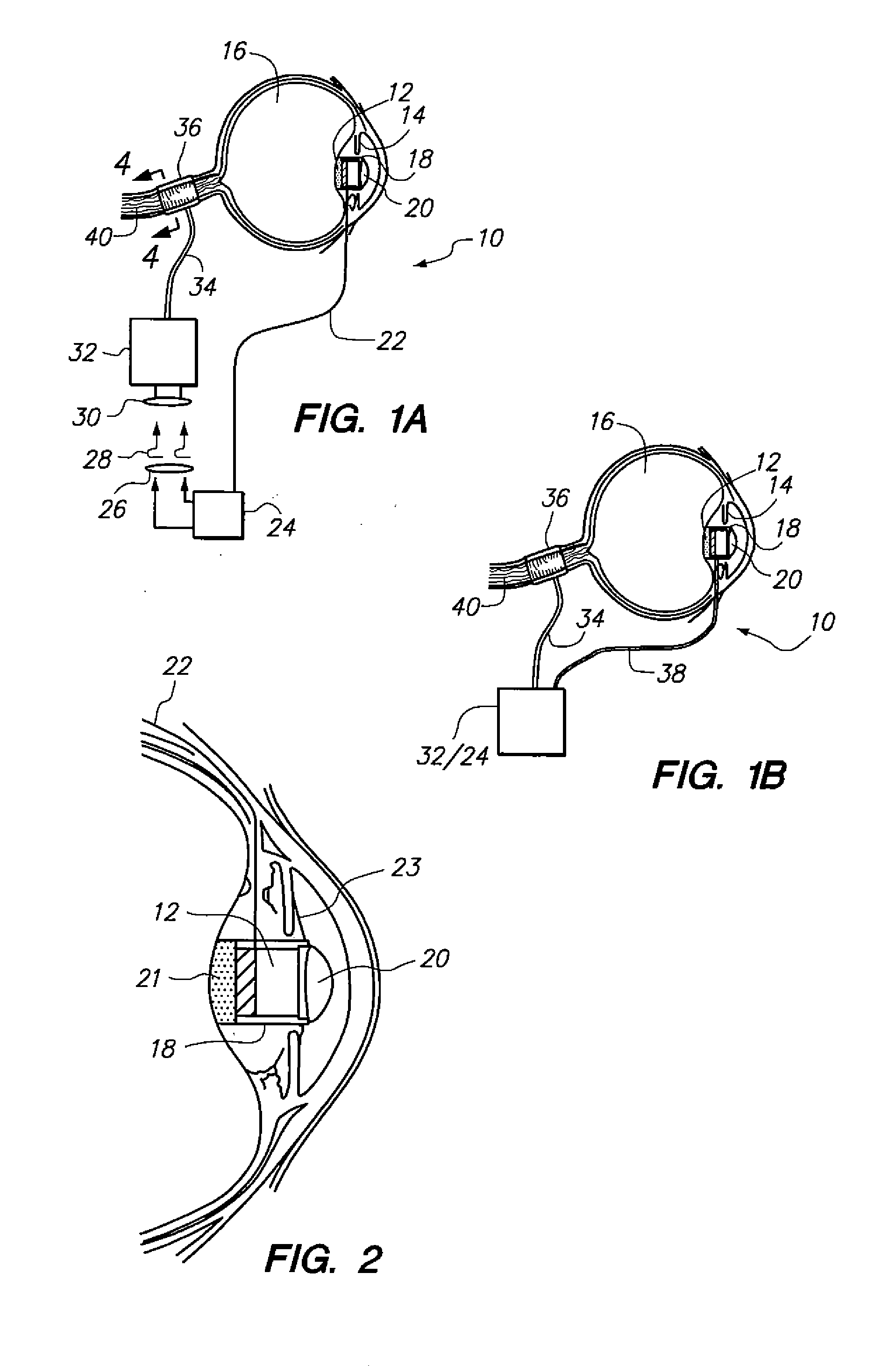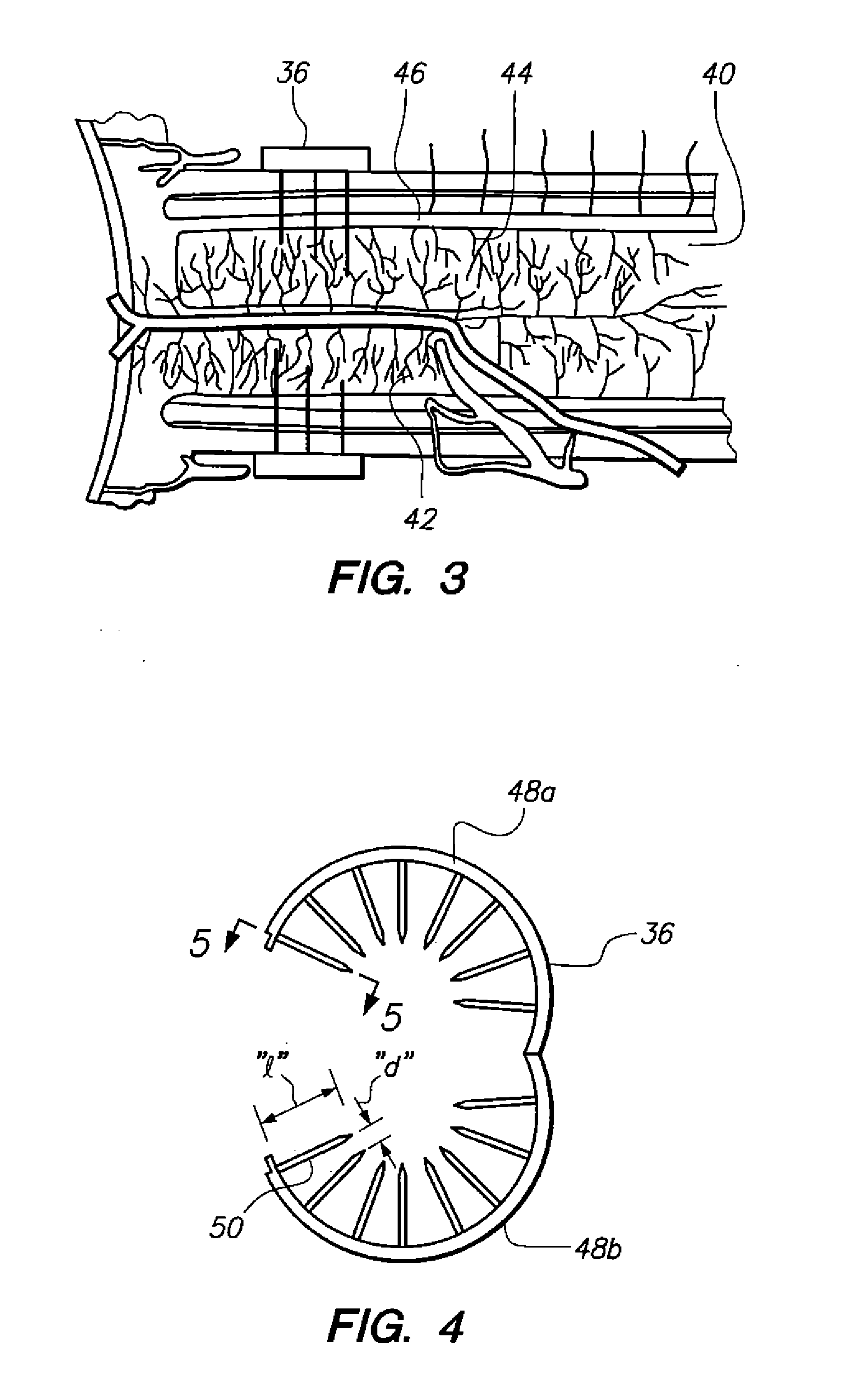Visual prosthesis
a prosthetic device and visual technology, applied in the field of visual prosthetic devices, can solve the problems of diseased retinas being effectively bypassed, the effect of reducing the overall efficiency of the electrode array, avoiding the stimulation of the same optic nerve fiber, and increasing the resolution of vision
- Summary
- Abstract
- Description
- Claims
- Application Information
AI Technical Summary
Benefits of technology
Problems solved by technology
Method used
Image
Examples
Embodiment Construction
[0030] Referring initially to FIG. 1A, a visual prosthesis in accordance with the present invention is shown and is generally designated 10. As shown, the prosthesis 10 includes an intraocular (CMOS) camera 12 that is mounted on the lens 14 in an eye 16 of a patient. Further, as also shown in FIG. 1A, the camera 12 is mounted in a chamber 18 along with a wide angle lens 20. Together, the chamber 18 and lens 20 provide a hermetic seal for the camera 12. Preferably, the camera 12 is a CMOS camera having a sensor area 3.37 mm×2.54 mm, with pixel sizes of 2.0 μm×2.0 μm and an output of 25 frames per second at 128×128 pixel resolution. Other, similar type cameras with different pixel size and resolution, however, could be used as well. As envisioned for the present invention, the various types of CMOS cameras that can be used as the camera 12 will vary primarily in the type of power supply that is used. Referring now to FIG. 2 it will be seen that the camera 12 typically includes a power...
PUM
 Login to View More
Login to View More Abstract
Description
Claims
Application Information
 Login to View More
Login to View More - R&D
- Intellectual Property
- Life Sciences
- Materials
- Tech Scout
- Unparalleled Data Quality
- Higher Quality Content
- 60% Fewer Hallucinations
Browse by: Latest US Patents, China's latest patents, Technical Efficacy Thesaurus, Application Domain, Technology Topic, Popular Technical Reports.
© 2025 PatSnap. All rights reserved.Legal|Privacy policy|Modern Slavery Act Transparency Statement|Sitemap|About US| Contact US: help@patsnap.com



